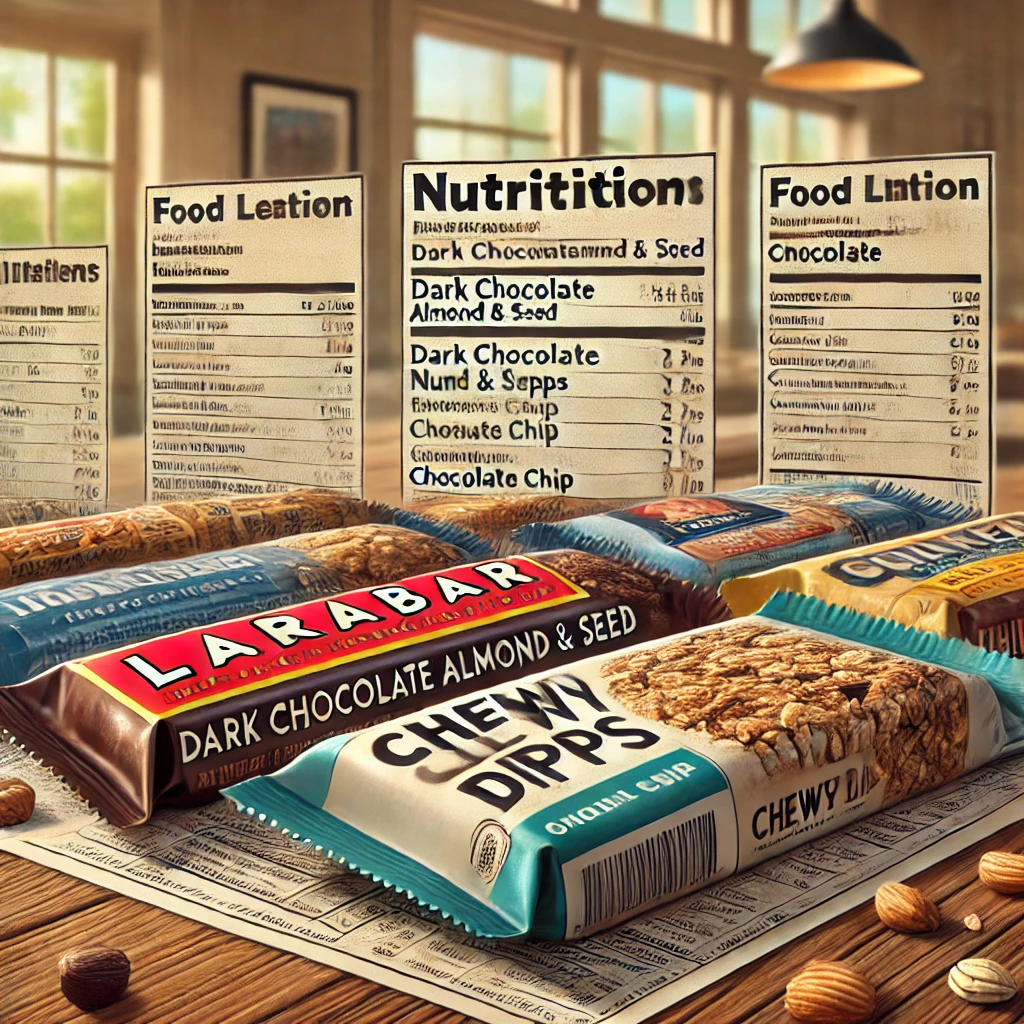Introduction: Unwrapping the Mystery of Granola Bar Cream Labels
Granola bars have become a staple in snack drawers and lunchboxes around the globe, admired for their convenience and perceived health benefits. But what really lurks beneath the wrapper? This comprehensive guide to granola bar cream food labels will peel back the layers of your favorite snack, helping you understand what goes into these bars and how they fit into a healthy diet.
The Core Ingredients: What’s Inside Your Granola Bar?
Key Ingredients List
When it comes to granola bars, the variety is endless. However, focusing on two popular choices—Larabar’s Dark Chocolate Almond Nut & Seed Bar and Quaker’s Chewy Dipps Chocolate Chip Bars—provides a snapshot of what these snacks typically contain:
- Larabar Dark Chocolate Almond Nut & Seed Bar: Known for its simple, whole food ingredients, this bar features almonds, dark chocolate chips, seeds (like sunflower or pumpkin), and sometimes a touch of honey or sea salt.
- Quaker Chewy Dipps Chocolate Chip Bars: A more indulgent choice, these bars often contain oats, rice crisps, chocolate chips, corn syrup, and various preservatives that contribute to their sweet taste and chewy texture.
Granola Bar Nutrition Pointers
The nutritional profiles of these bars are quite distinct:
- Larabar: Emphasizes minimal processing with no added sugars, relying on natural ingredients for flavor and nutrients.
- Quaker: Focuses on taste and texture, often incorporating added sugars and fats which might make them less ideal for those seeking a purely health-focused snack.
Health Check: Are Granola Bars Really Good for You?
Granola bars can be a healthy choice, but not all bars are created equal. Here’s what to consider:
- Nutrient Density: Bars like Larabar are typically higher in nutrients due to their whole food ingredients.
- Added Sugars: Bars with high sugar content, such as Quaker’s Chewy Dipps, can contribute to increased caloric intake without significant nutritional benefits.
- Dietary Fiber: A good granola bar should provide a decent amount of fiber, which aids in digestion and sustains satiety.
Key Benefits of Granola Bar Cream Labels
Understanding food labels can guide you to make better dietary choices. Here are the benefits of being label-savvy with your granola bars:
- Transparency: Knowing what’s in your food can help avoid unwanted ingredients like high fructose corn syrup or artificial additives.
- Tailored Eating: Labels make it easier to find products that fit dietary restrictions or preferences, such as gluten-free or vegan.
Wrap-Up: Empowered Eating Through Label Literacy
As we conclude our exploration into the world of granola bar cream food labels, it’s clear that the more you know, the better decisions you can make. From distinguishing between nutrient-packed snacks and sugar-laden treats to choosing a bar that aligns with your health goals, label literacy is an essential skill in today’s complex food landscape.
Conclusion: Making Smart Snack Choices
granola bar labels, we not only become more conscious consumers but also gain the ability to select snacks that are truly beneficial to our health and well-being. Remember, when it comes to food, knowledge truly is power, and a well-read label is a tool that helps navigate the wide world of dietary choices.
FAQs on Granola Bar Cream Food Labels
1. What should I look for on a granola bar food label?
Look for key components such as whole grains, the type and amount of sweeteners, fiber content, and the presence of any additives or preservatives. Ideally, a shorter list of recognizable ingredients is preferable.
2. How can I tell if a granola bar is healthy?
A healthy granola bar will have a balance of good fats, protein, and fiber, with minimal added sugars and artificial ingredients. Check the nutrition facts for lower sugar content and higher fiber.
3. Are granola bars suitable for weight loss?
They can be, provided they are low in calories and sugars while being high in fiber and protein. Always check the calorie content to ensure it fits into your daily caloric intake.
4. Can granola bars be a part of a diabetic diet?
Yes, but opt for bars with low sugar and high fiber content to help manage blood sugar levels. Be sure to read the nutritional information carefully.
5. What is the main difference between natural and conventional granola bars?
Natural granola bars typically contain ingredients that are minimally processed and free from artificial additives, while conventional bars might include more processed ingredients and preservatives.
6. How long do granola bars last?
The shelf life of granola bars can vary depending on the ingredients and preservatives used. Generally, commercially packaged bars can last several months. Check the expiration date on the package for guidance.
7. Are there specific granola bars for children?
Yes, some brands offer granola bars specifically designed for children, which are usually smaller in size and may contain less fiber and protein compared to adult versions. These often come in flavors that appeal to younger tastes.
8. How do I understand serving sizes on granola bar labels?
Serving sizes are usually specified on the packaging. One bar can be one or more servings, so it’s important to check this to understand the nutritional content you’re consuming per serving.


